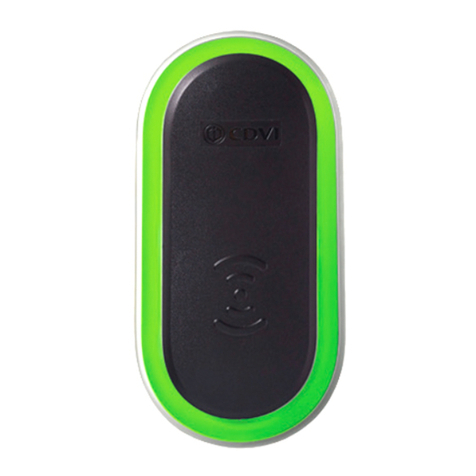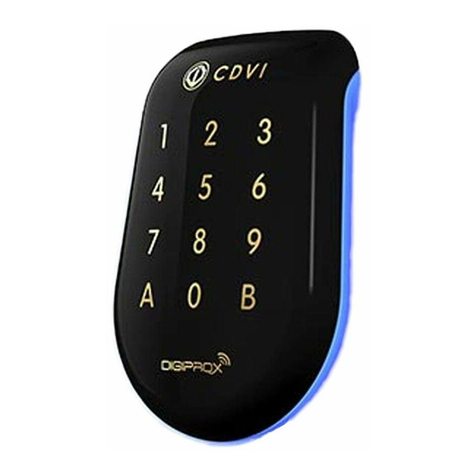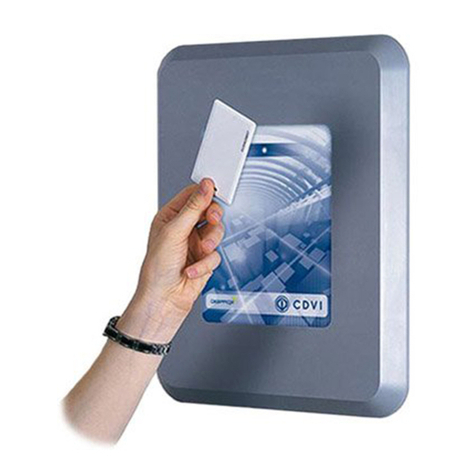CDVI DGLPWLC User manual
Other CDVI Card Reader manuals
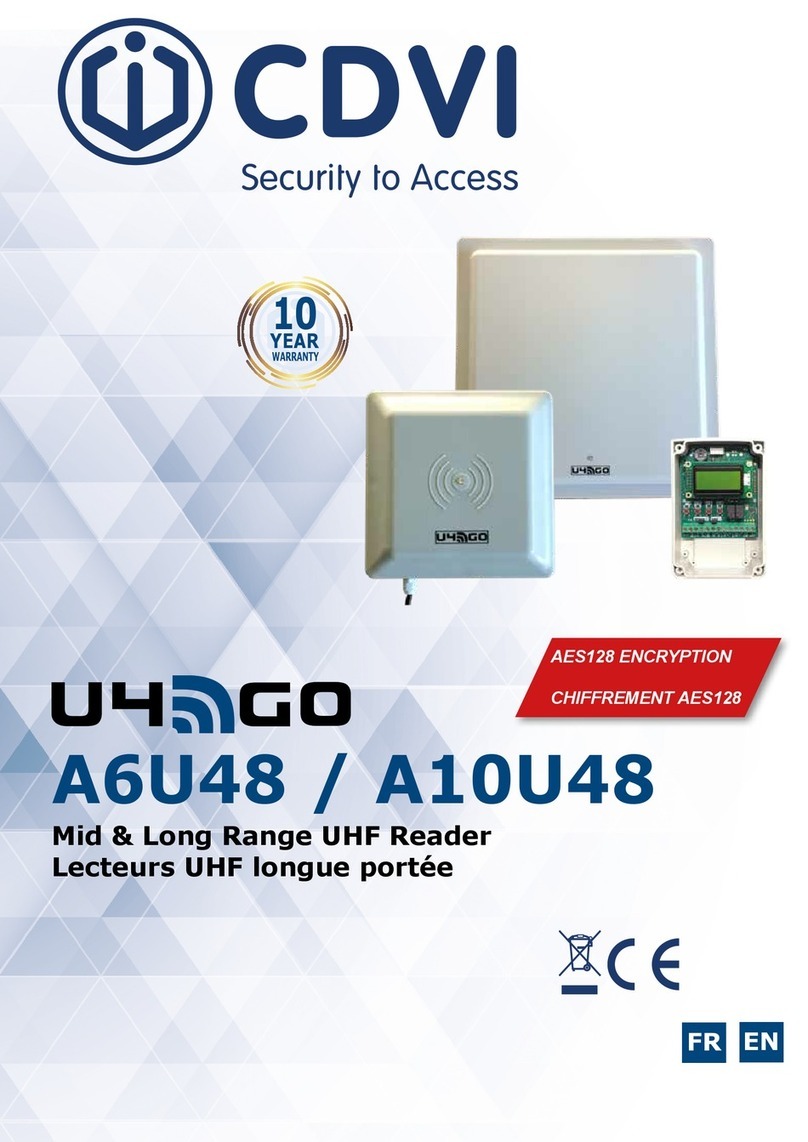
CDVI
CDVI U4GO A6U48 User manual
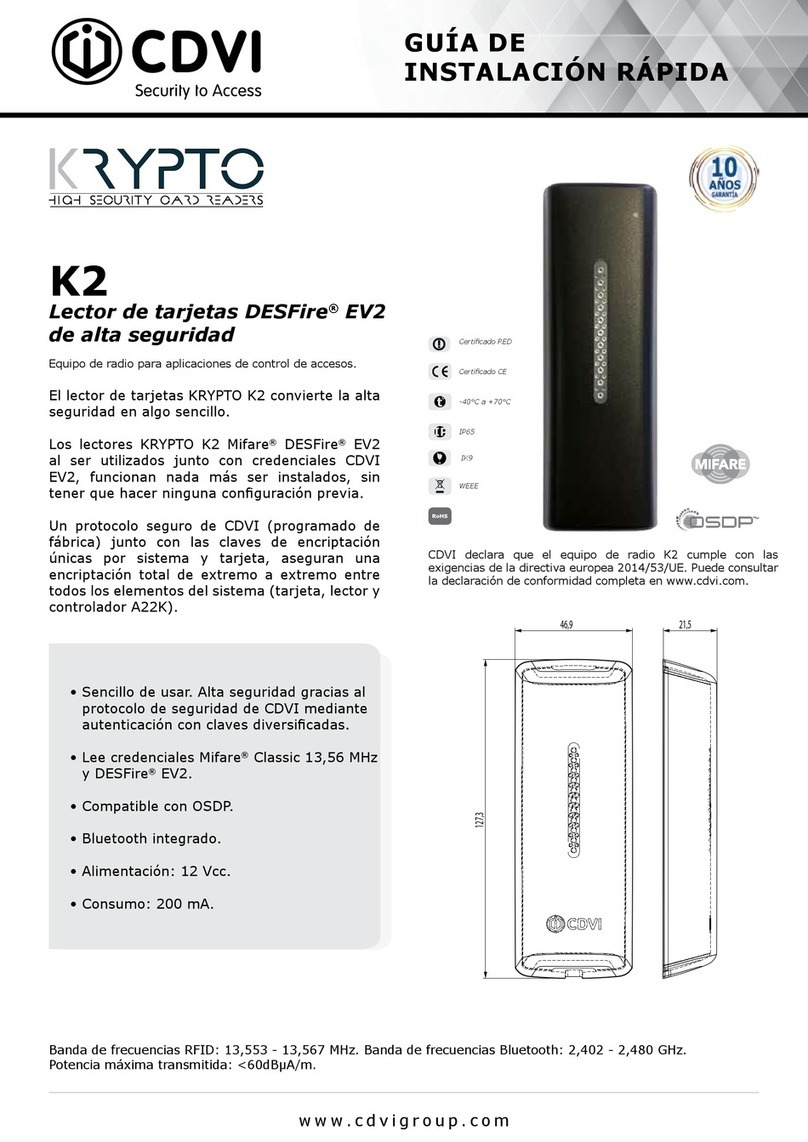
CDVI
CDVI KRYPTO K2 Instruction Manual
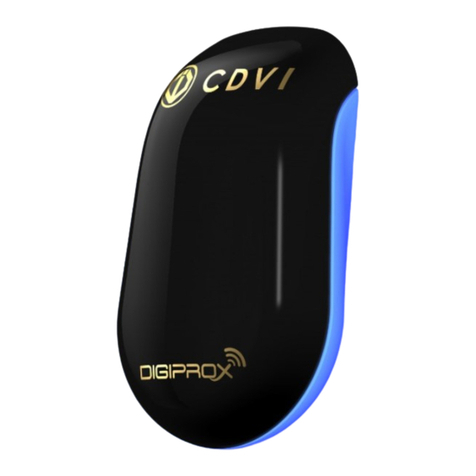
CDVI
CDVI NANOPB Instruction Manual

CDVI
CDVI SOLARPW User manual
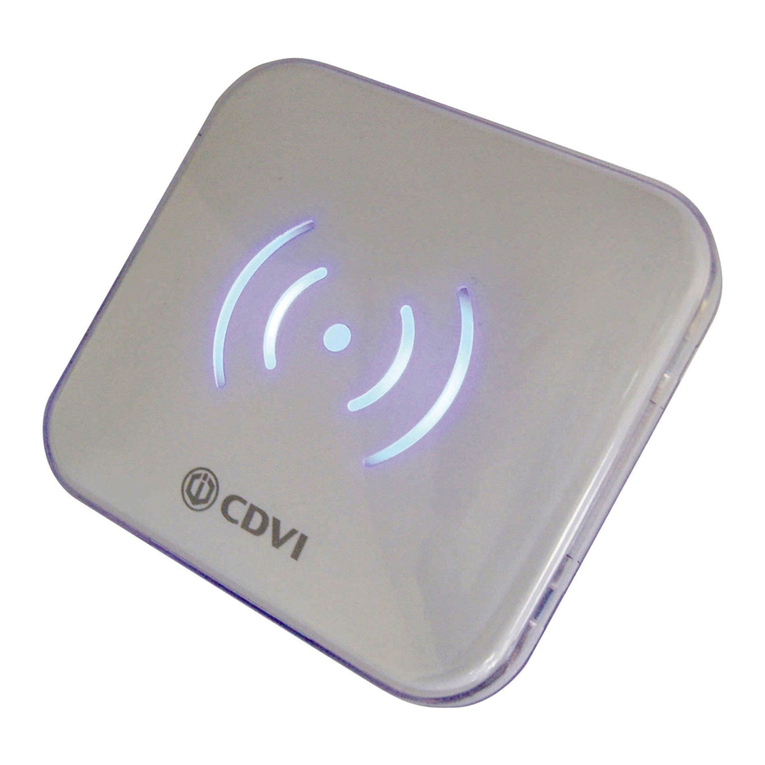
CDVI
CDVI MOONARW User manual
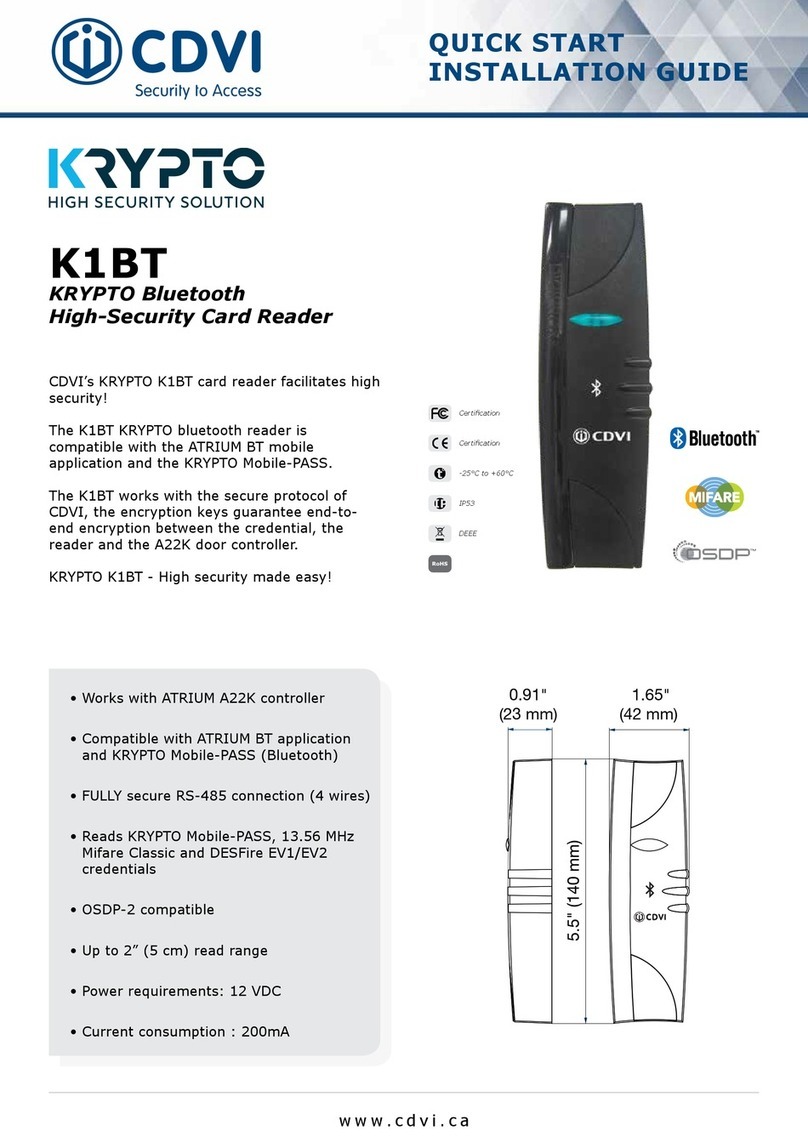
CDVI
CDVI KRYPTO K1BT Instruction Manual
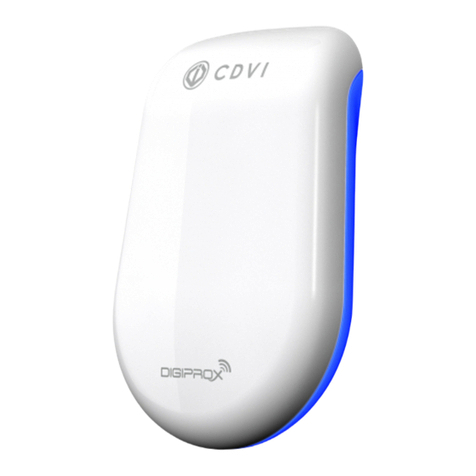
CDVI
CDVI Mifare SOLARMW User manual

CDVI
CDVI KRYPTO K2 Instruction Manual
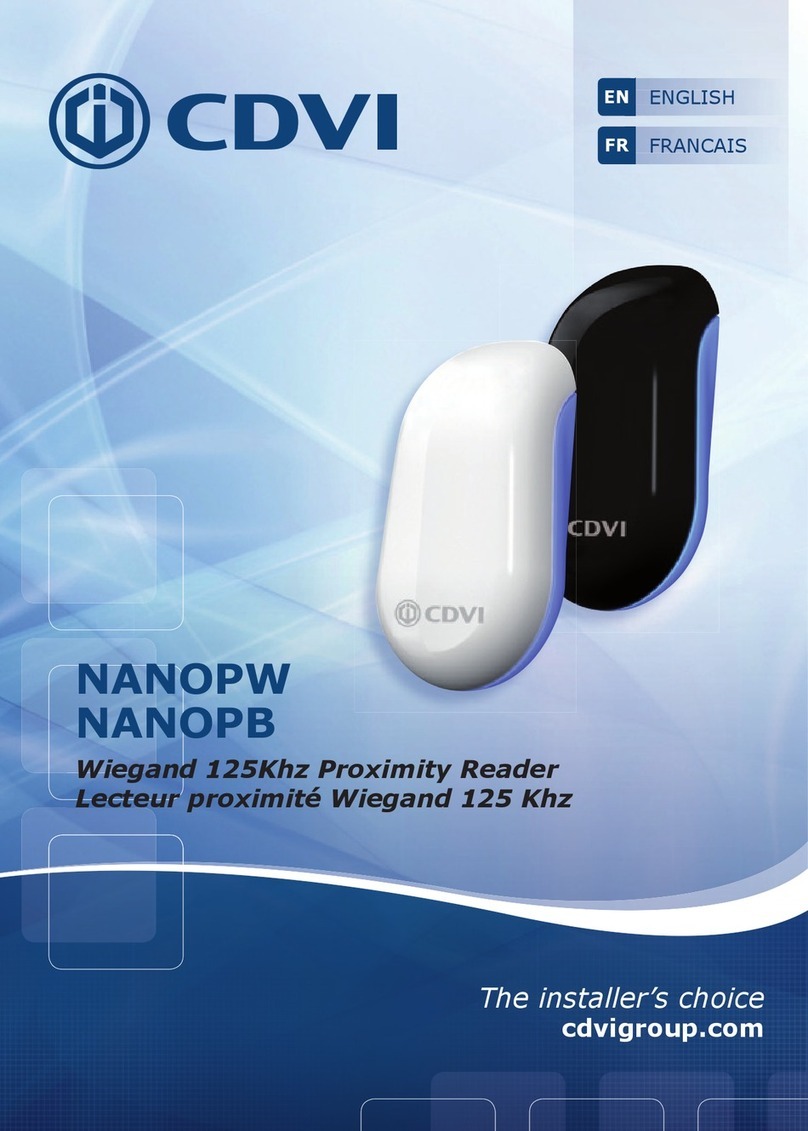
CDVI
CDVI NANOPW User manual
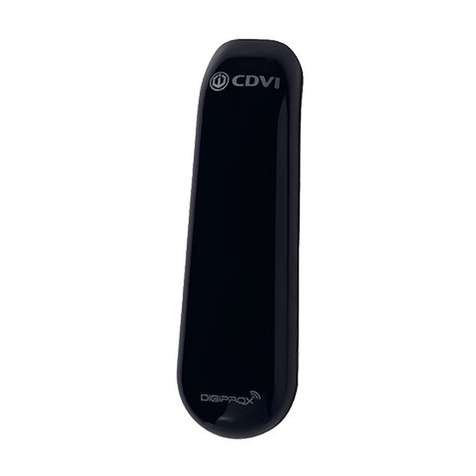
CDVI
CDVI STAR1M User manual
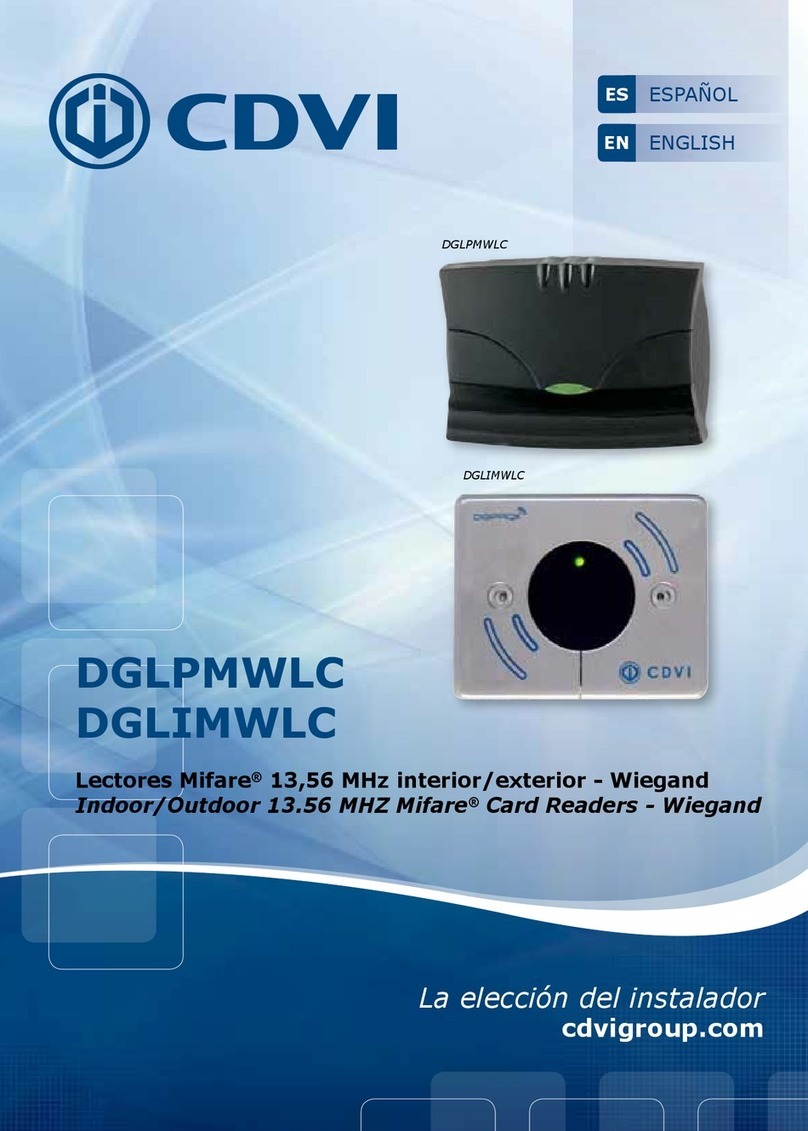
CDVI
CDVI DGLPM WLC User manual
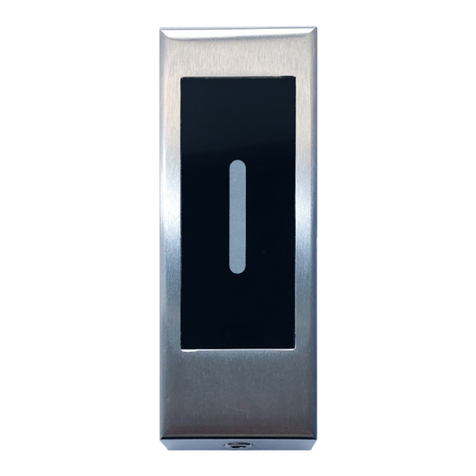
CDVI
CDVI KRYPTO K2I User manual

CDVI
CDVI DGLP FN WLC 26 User manual
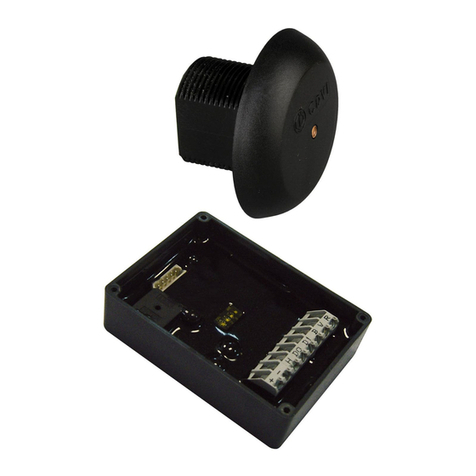
CDVI
CDVI DGLPTWLC User manual
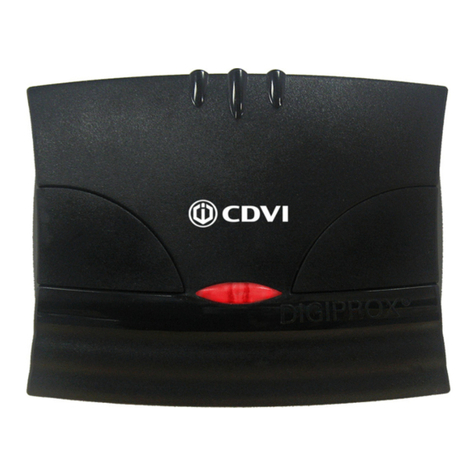
CDVI
CDVI DGLPWLC User manual
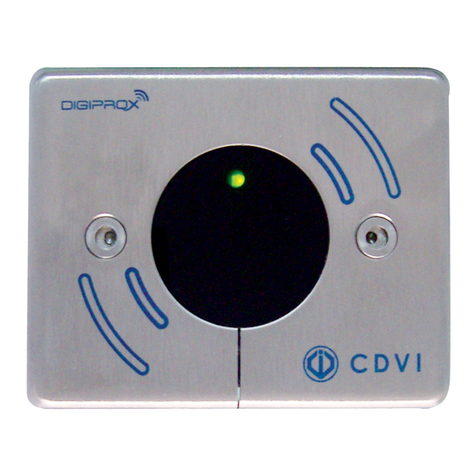
CDVI
CDVI DGLIMWLC User manual
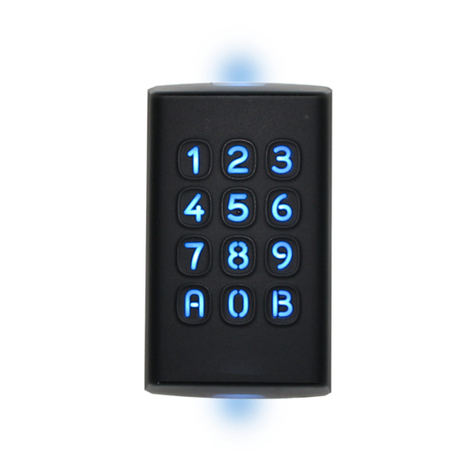
CDVI
CDVI DESFire EV2 Instruction Manual
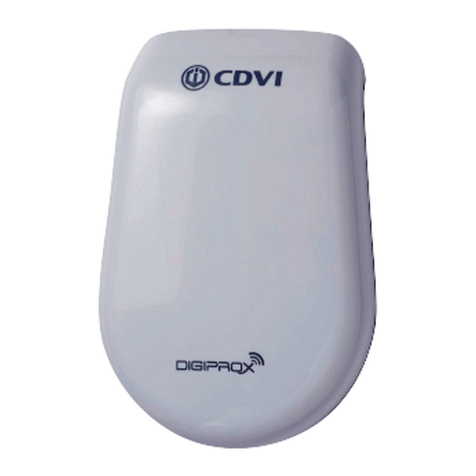
CDVI
CDVI SOLARMWD User manual
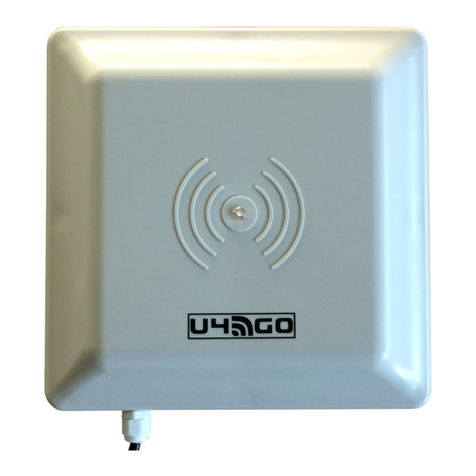
CDVI
CDVI U4Go Series User manual
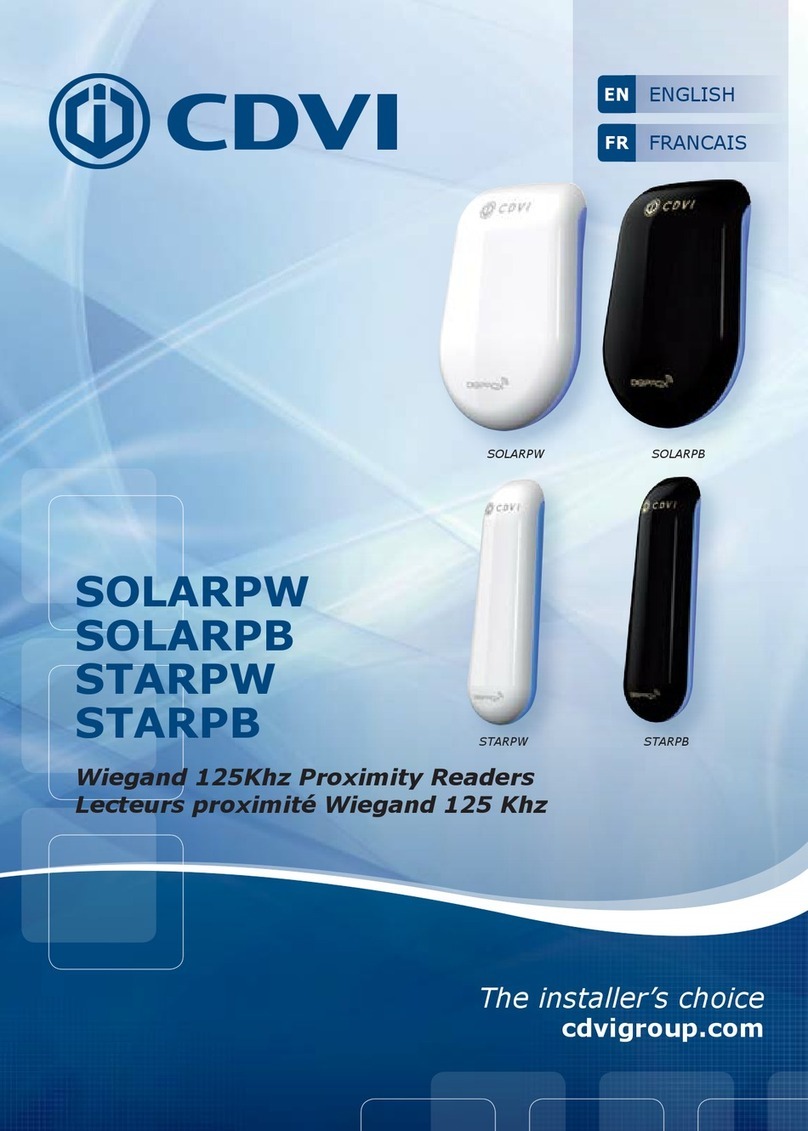
CDVI
CDVI SOLARPW User manual
Popular Card Reader manuals by other brands

ViziT
ViziT RD-4F operating instructions

Jinmuyu Electronics
Jinmuyu Electronics MR811 Series user manual

Conrad
Conrad PCMCIA operating instructions

Lindy
Lindy 51541 user manual

Diapro T?bbi Ürünler
Diapro T?bbi Ürünler Across System user manual

Johnson Controls
Johnson Controls Kantech tyco ioSmart installation guide

